I would like to use a basic data.frame to get three polylines each of different colours
I am currently using the below code as an example.
require(leaflet)
df <- data.frame(lat=c(rnorm(20,50),rnorm(40,0),rnorm(40,-30)),
lon=rnorm(100),
group=rep(c("a","b","c"),times=c(20,40,40)),
col=rep(rainbow(3,alpha=NULL),times=c(20,40,40)))
leaflet(df) %>% addTiles() %>% addPolylines(lng=~lon,lat=~lat,color=~col)
But I get one continous line and and not the three separate lines for each group.
I can separate the lines but doing an very inelegant trick of:
df_a <- rbind(df[df$group=="a",],data.frame(lat=NA,lon=NA,group="a",col=NA))
df_b <- rbind(df[df$group=="b",],data.frame(lat=NA,lon=NA,group="b",col=NA))
df_c <- rbind(df[df$group=="c",],data.frame(lat=NA,lon=NA,group="c",col=NA))
df <- rbind(df_a,df_b)
df <- rbind(df,df_c)
before the leaflet function, but it still does not solve the colour problem.
Any help to get the three polylines different colours would be much appreciated.
